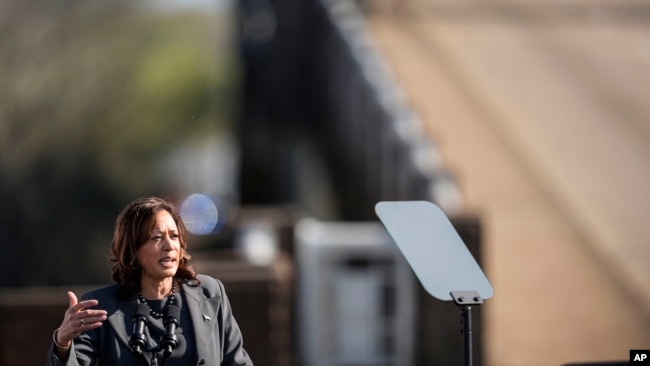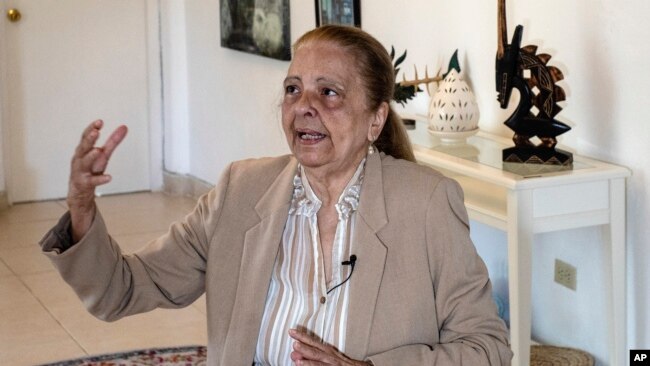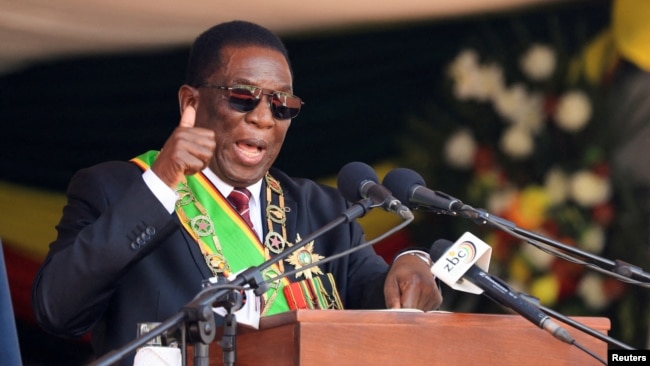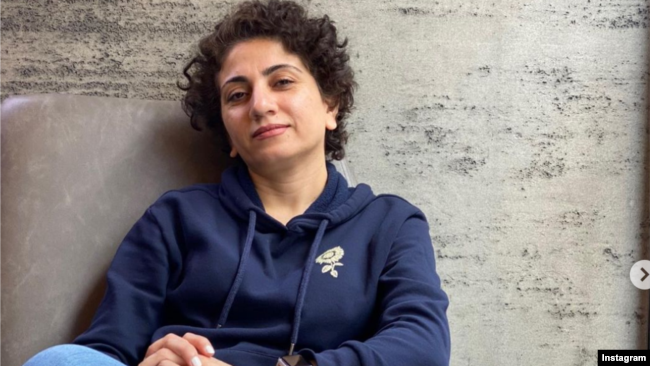브라질의 수백만 명에게 빈곤과 연료 가격의 상승은 과거로의 회귀를 의미합니다.
For Millions in Brazil, Rising Poverty and Fuel Prices Mean a Return to the Past
페이지 정보
작성자 Yan Boechat 작성일 21-11-17 16:00 댓글 0본문
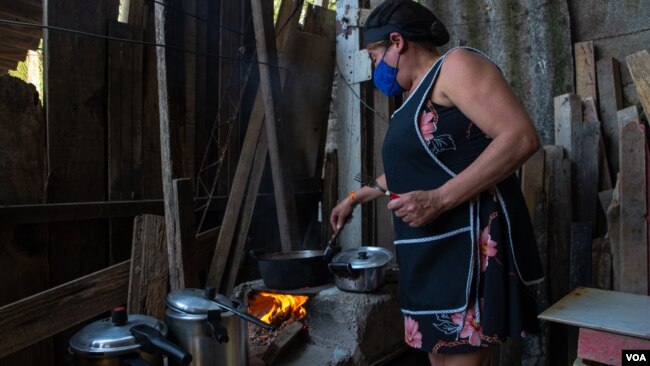
2021년 11월 14일 한 여성이 상파울루 외곽의 나무 난로에서 요리를 하고 있습니다. (얀 보아트/VOA)
A woman cooks on a wood stove in the outskirts of São Paulo, Nov. 14, 2021. (Yan Boechat/VOA)
상파울루, 브레이즈IL —
SÃO PAULO, BRAZIL —
마리아 히베이루 다 시우바(64)는 브라질에서 가장 큰 도시이자 1,200만 명 이상의 사람들의 거주지인 상파울루 외곽에 있는 자신의 작은 식료품점을 지나치는 지인들과 친구들에게 새로운 기계를 매복하며 뜨거운 오후를 보냈습니다.
María Ribeiro da Silva, 64, spent a hot afternoon hawking a new contraption to acquaintances and friends who passed by her small grocery store on the outskirts of São Paulo, Brazil's largest city and home to more than 12 million people.
지나가던 모든 사람들이 그녀로부터 같은 초대를 받았습니다: "이리와서 내 난로를 보세요. 아름답군요 제가 해냈어요."
Everyone who passed by received the same invitation from her: "Come, come and see my stove. It's beautiful. I made it."
손님 한 명 한 명 한 명이 같은 설명을 들었습니다. "저는 굴뚝과 모든 것을 갖춘 진짜 나무 화덕을 만들었습니다. 더 이상 연기, 더위도 없습니다."
Each guest received the same explanation: "I built a real wood fire oven, with a chimney and everything. No more smoke, no more heat."
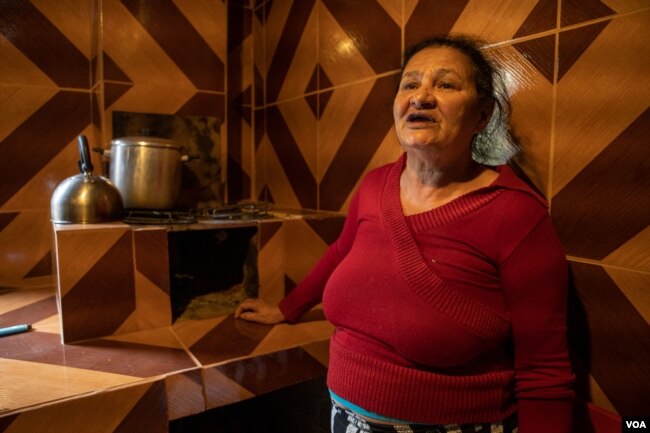
마리아 다 실바는 2021년 11월 14일 상파울루에서 자신의 식료품점을 지나가는 누구에게나 새 나무 난로를 보여줍니다. (얀 보에차트/VOA)
Maria da Silva shows her new wood stove to anyone who passes by her grocery store, in São Paulo, November 14, 2021. (Yan Boechat/VOA)
Ribeiro da Silva가 땔감으로 요리를 한 지 거의 50년이 되었습니다. 1974년 브라질 북동부 지역의 가뭄, 배고픔, 가난을 피해 상파울루에 도착한 이후, 그녀는 가스로만 요리를 했습니다.
It had been almost 50 years since Ribeiro da Silva cooked with firewood. Since she arrived in São Paulo in 1974, fleeing drought, hunger and poverty in the impoverished northeast region of Brazil, she has only cooked with gas.
"저는 어린 시절을 장작을 쓰며 보냈습니다. 가스가 없었어요. 우리는 진짜 스토브를 가질 돈이 없었어요. 하지만 제가 상파울루에 도착한 이후로... 나무는 과거에 있었습니다," 라고 그녀가 VOA에 말했습니다.
"I spent my childhood using firewood. We didn't have gas. We didn't have the money to have a real stove. But since I arrived in Sao Paulo … wood was in the past," she told VOA.
그러나 브라질 경제가 악화되고 COVID-19 전염병이 인구의 가장 가난한 지역에 미치는 파괴적인 영향으로 인해, 땔감은 히베이루 다 실바스와 같은 수백만 가구의 유일한 선택지가 되었습니다.
But with the Brazilian economy worsening, and the devastating effects of the COVID-19 pandemic on the poorest parts of the population, firewood has become the only option for millions of families like Ribeiro da Silvas'.
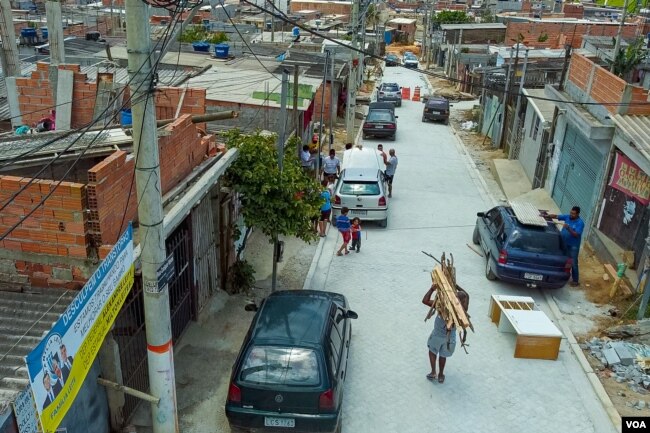
집 근처의 작은 숲으로 간 후아레스 비아나는 2021년 11월 14일 상파울로에서 일주일 동안 요리할 나무를 가지고 돌아옵니다. (얀 보에차트/VOA)
After going to a little forest close to his home, Juarez Viana returns with the wood he will use to cook for a week, in Sao Paulo, Nov. 14, 2021. (Yan Boechat/VOA)
Ribeiro da Silva에게는 느리고 점진적인 과정이었습니다. 첫째, 땔감은 가스가 떨어지고 그것을 대체할 돈이 충분하지 않은 극단적인 경우에만 사용되었습니다. 하지만 6개월 전 그녀가 상파울루 시내의 한 회사에서 청소부로 일자리를 잃었을 때, 땔감은 음식을 요리하는 주요 연료가 되었습니다.
It was a slow and gradual process for Ribeiro da Silva. First, firewood was only used in extreme cases when the gas ran out and there was not enough money to replace it. But when she lost her job as a cleaner at a company in downtown São Paulo six months ago, firewood became the primary fuel to cook food.
지금은 커피를 끓이거나 음식을 장작에 데우는 간단한 일에만 가스레인지를 사용합니다. 저는 기름을 살 돈이 더 이상 없어요. 가격이 너무 비싸요. 그건 불가능해요," 라고 그녀가 말했어요.
"Now, I only use the gas stove for simple things like making coffee or heating the food I cooked on firewood. I don't have any more money to buy gas. The price is too high. It's impossible," she said.
연료 가격이 치솟고 있습니다.
Skyrocketing fuel prices
브라질 지리 통계 연구소의 자료에 따르면, 브라질 인구의 최소 25%가 목재를 주요 요리 소스로 사용하고 있습니다.
According to data from the Brazilian Institute of Geography and Statistics, at least 25% of the Brazilian population is using wood as their primary cooking source.
이것은 COVID-19 대유행의 시작 전입니다.
This was before the onset of the COVID-19 pandemic.
대유행으로 브라질 통계 연구소가 분기별 직접 설문조사를 중단해 2020년과 2021년 자료가 없다고 브라질 가족의 땔감 소비 선도 연구원인 아드리아나 지오다 교황청 가톨릭대 화학과 교수가 밝혔습니다.
"Due to the pandemic, the Brazilian Statistical Institute stopped carrying out quarterly in-person surveys, so we don't have data for 2020 and 2021," said Adriana Gioda, a professor in the department of chemistry at Pontifical Catholic University of Rio de Janeiro and a leading researcher on firewood consumption by Brazilian families.
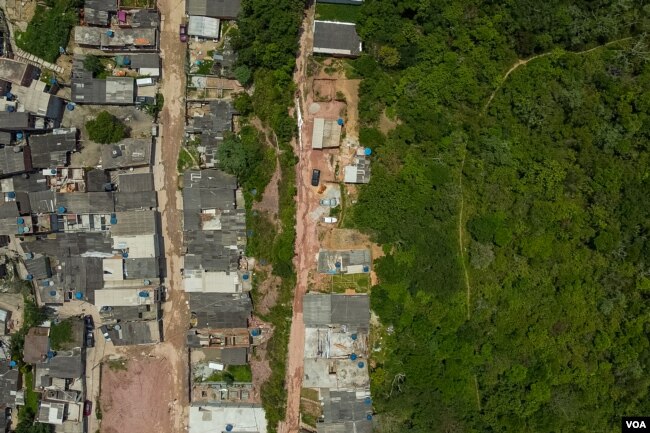
상파울루 외곽에서는 2021년 11월 14일 브라질에서 가장 큰 도시의 마지막 녹지 잔해를 향해 가난한 이웃들이 전진하고 있습니다.
In the outskirts of Sao Paulo, poor neighborhoods advance towards the last remnants of greenery in the biggest Brazilian city, Nov. 14, 2021. (Yan Boechat/VOA)
하지만 연방 정부가 주거용 가스 보조금을 삭감하고 연료 가격 정책을 국제 가격에 묶은 2016년 이후, 음식을 만들기 위한 장작 사용이 꾸준히 증가하고 있습니다."라고 그녀는 VOA에 말했습니다.
"But since 2016, when the federal government cut subsidies for residential gas and tied the fuel price policy to the international prices, there has been a steady growth in the use of firewood to make food," she told VOA.
연료 가격은 지난 5년 동안 꾸준히 상승해왔으나 2019년 자이르 보우소나루 대통령이 취임한 이후 급등했습니다. 그는 그 나라의 국영 석유 회사에 간섭하지 않고 연료 가격이 국제 시장을 따르도록 허용하겠다고 약속했습니다.
Fuel prices have been rising steadily over the past five years but have skyrocketed since President Jair Bolsonaro took office in 2019. He promised not to interfere with the country's state oil company and allow fuel prices to follow the international market.
올해만 해도 주거용 가스 가격이 평균 35% 상승했습니다. 액화석유가스는 브라질에서 식량 생산을 위한 1차 연료로, 그 원가는 석유 배럴의 가격과 직결됩니다.
This year alone, the price of residential gas rose by an average of 35%. Liquefied petroleum gas is the primary fuel for food production in Brazil, and its cost is linked directly to the price of the oil barrels.
'시간이 지났습니다'
'Back in time'
"브라질 내륙, 시골, 더 고립된 지역에서는 장작을 사용하는 것이 전통입니다. 하지만 우리에게 가장 인상 깊었던 것은 대부분의 도시 지역, 예를 들어 리우데자네이루와 상파울루와 같은 브라질의 대도시에서 목재 사용이 정확하게 발전하고 있다는 것입니다," 라고 지오다가 말했습니다.
"In the interior of Brazil, in rural and more isolated areas, using firewood is a tradition. But what impressed us most is that the use of wood is advancing precisely in the most urban areas, in large Brazilian cities, such as Rio de Janeiro and São Paulo," Gioda said.
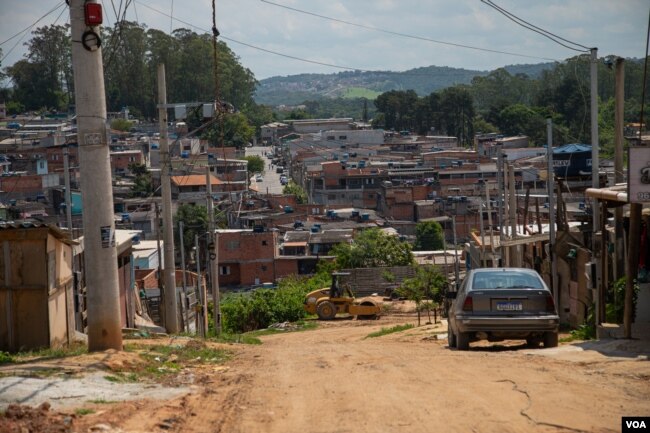
상파울루 외곽의 가난한 지역인 자르딤 마라호아라가 2021년 11월 14일에 찍혔습니다. 주민 대부분은 브라질 북동부에서 온 이주민들입니다.
Jardim Marajoara, a poor area on the outskirts of Sao Paulo, is pictured Nov. 14, 2021. Most of its inhabitants are migrants that came from the Northeast of Brazil. (Yan Boechat/VOA)
그리고 히베이루 다 시우바가 살고 있는 상파울루 외곽에 있는 브라질 북동부 지역의 가난한 이주민 지역인 자르딤 마라호아라와 같은 지역에서 증가하고 있습니다. 경제위기로 가장 빈곤하고 피해를 많이 보는 곳이 이들 지역입니다.
And it is rising in areas such as Jardim Marajoara, a poor neighborhood of migrants from the northeast region of Brazil on Sao Paulo's outskirts, where Ribeiro da Silva lives. It is in these regions that the poorest and those most affected by the economic crisis are concentrated.
역시 대유행으로 직장을 잃은 버스 운전사 후아레스 비아나 씨는 요리를 하기 위해 장작으로 눈을 돌렸습니다. 그는 히베이루 다 실바처럼 상파울루 교외에 살고 있으며, 상파울루의 마지막 녹지로 뻗어 있습니다. 일주일에 한 번, 그는 길을 건너 나무를 가지러 작은 숲으로 들어갑니다.
Juarez Viana, a bus driver who also lost his job during the pandemic, has turned to firewood to cook. He, like Ribeiro da Silva, lives in a suburb of São Paulo that is sprawling into the last green areas of the city. Once a week, he crosses the street and enters a small forest to fetch wood.
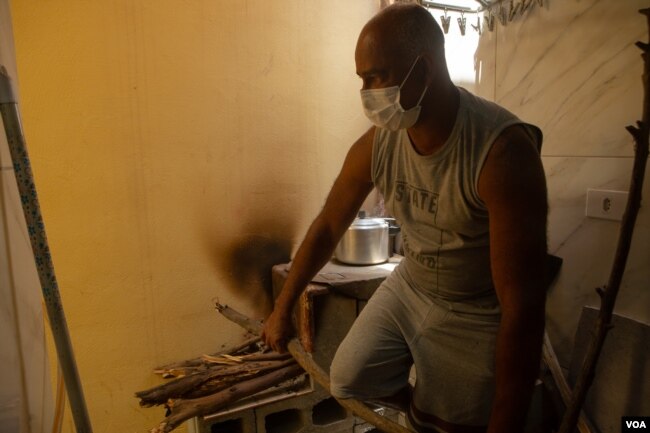
후아레스 비아나가 지난달부터 그의 가족을 위해 요리하기 위해 사용해 온 나무 난로에 딱 맞게 막대기를 부러뜨립니다.
Juarez Viana breaks a stick to fit on the wood stove he has been using to cook for his family since last month, in São Paulo, Nov. 14, 2021. (Yan Boechat/VOA)
힘든 일이고, 시간을 거슬러 올라간 것 같습니다," 라고 브라질 북동부에서 온 이주민인 비아나 씨가 말했습니다. 49세의 나이로 그는 어린 시절 나무로 요리를 한 것을 기억합니다. 우리는 기름을 살 돈이 더 없습니다. 가격이 통제 불능이에요. 이런 건 처음 봐요“
"It's hard work, and it seems like I've gone back in time," said Viana, who is also a migrant from the Brazilian northeast. At 49, he remembers cooking with wood as a child. "But it's worth it. We do not have more money to buy gas. The price is out of control. I've never seen anything like this."
우리는 적어도 반세기 전으로 거슬러 올라가고 있습니다."라고 알레망 오스왈도 크루즈 병원의 연구 책임자인 유폐학자 엘리 피스는 말했다. "1960년대 이후, 우리는 요리에 장작을 사용하는 것과 관련된 호흡기 질환을 더 이상 발견하지 못했습니다. 하지만 너무 많은 사람들이 장작으로 돌아가기 때문에, 이것은 곧 병원으로 돌아갈 문제입니다.“
"We are going back in time, going back at least half a century," said pulmonologist Elie Fiss, a research director at Hospital Alemão Oswaldo Cruz. "Since the 1960s, we no longer saw respiratory problems related to the use of firewood for cooking. But with so many people going back to the firewood, this is a problem that will soon return to hospitals."
출처 : VOANews
댓글목록 0
등록된 댓글이 없습니다.


